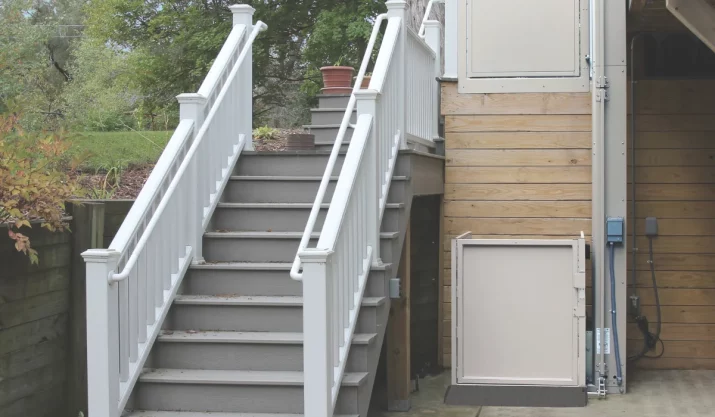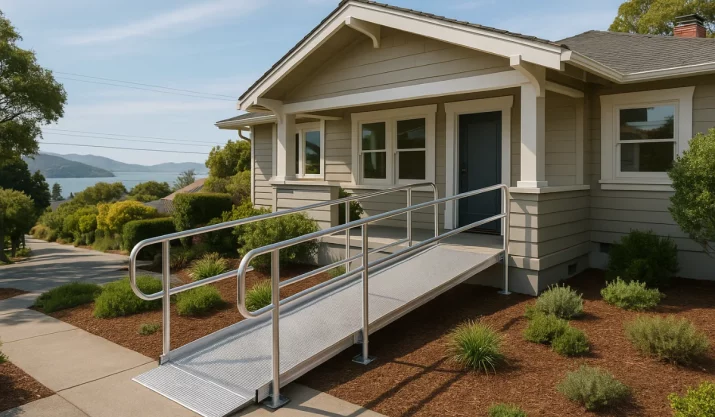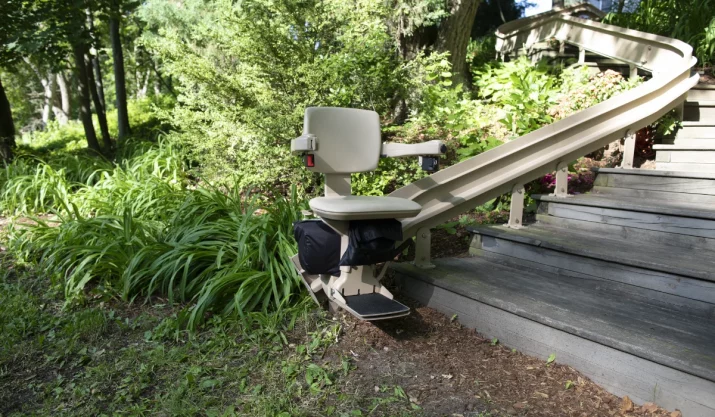Ramps vs. Lifts: Choosing the Right Option for Your Entryway
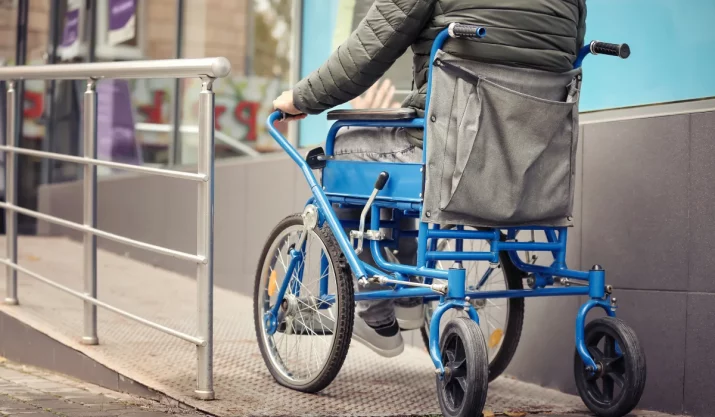
Table of Contents
- Key Takeaways:
- Understanding Your Options
- Key Differences at a Glance
- Choosing Based on Your Entry Setup
- ADA and Local Building Codes
- Budget Considerations
- Consider Accessibility If You Plan On Aging in Place
- When to Choose a Ramp
- When to Choose a Lift
- Find The Right Mobility Solution For Your Entryway
- FAQs
When improving your home’s accessibility, especially at the entryway, you’ll likely consider two main options: ramps or lifts. Both options support wheelchair users and people with mobility aids. However, they meet different needs.
In this guide, we’ll compare ramps and lifts and show you the pros and cons of each option. We’ll also provide you with key factors to consider, enabling you to select the best choice for your home’s layout, mobility needs, and budget.
Key Takeaways:
- Access ramps are most effective for low rises and spacious areas. They provide a reliable, low-maintenance, and cost-effective solution for individuals with limited mobility.
- Vertical platform lifts (VPLs) are ideal for steep or compact entryways where long ramps would occupy too much space or compromise the home’s curb appeal.
- Always follow ADA guidelines and local building codes. Pay attention to slope ratios, handrail rules, and safety standards for lifts to provide safe mobility solutions.
- Select a ramp or lift based on your home’s layout, available space, and your long-term mobility requirements. Careful consideration today can help you avoid headaches in the future, especially if you’re planning to age in place.
Understanding Your Options
Wheelchair ramps
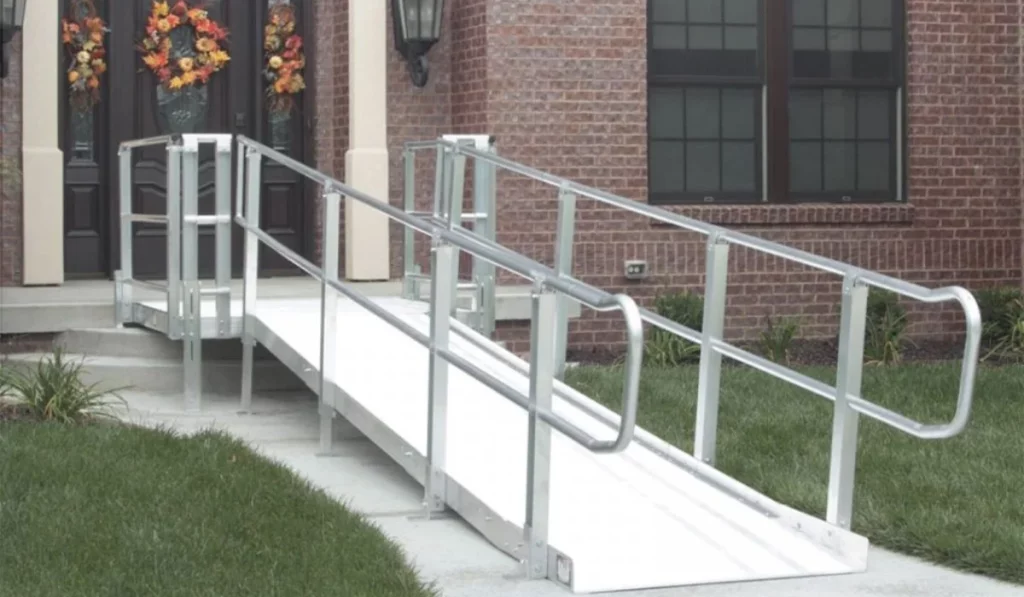
A wheelchair ramp creates a sloped surface that lets users roll over elevation changes instead of climbing stairs. You can choose from permanent, modular, or portable designs, making ramps a popular choice for homes with low to moderate entry heights.
Ramps are handy for:
- Manual wheelchair users
- People using rollators or walkers
- Caregivers helping someone up a gentle incline
- Homes with short entry steps or stoops
Wheelchair lifts (Vertical Platform Lifts)
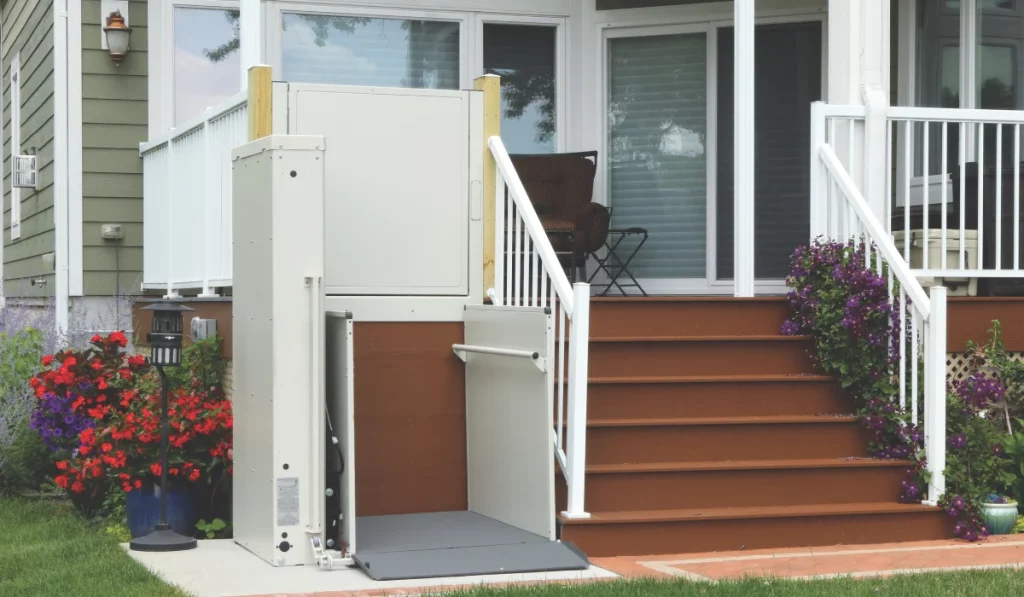
Also called VPLs or porch lifts, vertical platform lifts lift users straight up from ground level to a porch or landing. These lifts are most effective in areas where space is too limited for a ramp.
Wheelchair lifts are often a better choice for:
- Steeper elevation changes that ramps can’t safely accommodate
- Users of power chairs or mobility scooters
- Homes where a long ramp would be impractical
- Families who want a more compact, low-maintenance option
Key Differences at a Glance
| Feature | Ramp | Vertical Platform Lift (VPL) |
|---|---|---|
| Best for | Low rises (1–3 steps) | Moderate to high rises (up to 6 feet) |
| Space Required | Requires a large footprint | Fits into compact spaces |
| Ease of use | Simple, no moving parts | Push-button controls for easy operation |
| Upfront Cost | Lower initial cost | Higher cost, but space-saving |
| ADA Compliance | Yes, if slope and width meet standards | Yes, when installed to code |
| Curb Appeal | May affect yard appearance | More discreet, depending on the model |
| Upkeep | Minimal, only requires routine cleaning | Requires occasional maintenance on parts |
| Weather Durability | Excellent, especially aluminum models | Weather-resistant models are available |
Choosing Based on Your Entry Setup
1. Elevation change
You need to build a one-foot ramp for every inch of rise when building a ramp. If your entry is 24 inches high, you’ll need 24 feet of ramp. This makes ramps impractical in tight spaces, so that a VPL may be a better option.
2. Amount of space
Ramps need more room. It can often stretch across a yard or wrap around a porch. If your property sits on a small or urban lot, a wheelchair lift may be a more feasible solution.
3. Frequency of use
Both ramps and VPLs serve wheelchair users, as well as users of other mobility aids, such as power chairs and scooters. However, ease of use matters. For example, aging adults, as well as caregivers assisting mobility-challenged individuals, may find pressing the VPL button for accessibility more convenient than navigating a slope.
ADA and Local Building Codes
Whether you install a ramp or a lift, it’s essential to follow ADA guidelines (if applicable) and verify your local building codes. For example:
- ADA-compliant ramps need a 1:12 slope, level landings, and handrails.
- VPLs must meet safety and installation standards. This may include a concrete pad, weather cover, or locking gate.
Always consult with a licensed contractor or accessibility specialist familiar with California’s building codes before installing either option.
Budget Considerations
Ramps, particularly modular aluminum ramps, are the top choice for homeowners seeking cost-effective accessibility. However, ramp installations will also entail major landscaping or structural changes that may cause installation costs to rise quickly.
Wheelchair lifts will typically require a higher upfront investment. However, wheelchair lifts offer users a good return on investment, especially when installed in a house with limited spaces or steep entry points.
In the long term, having a ramp or lift installed at the entry point of your home enhances your home’s overall safety and accessibility. Adding a ramp or lift can significantly improve your home’s value, particularly for families that require accessible features.
Consider Accessibility If You Plan On Aging in Place
According to the National Institute on Aging, many older adults prefer to stay in their homes and remain independent rather than living with relatives or in assisted living facilities.
If you or a loved one is beginning to notice mobility issues at home, it may be time to consider installing mobility aids. Aging is inevitable, and if you or your loved one plans on aging in place, preparing for future accessibility is a wise investment.
Two primary factors to consider before remodeling your home for aging in place are accessibility and comfort. If you wish to age in place, consider using assistive devices that will ensure your safety, prevent falls, and support independent living.
Many homeowners combine a stair lift inside with a VPL outdoors to ensure safety and accessibility throughout their property.
When to Choose a Ramp
A ramp is a great option if your entry is less than 30 inches high and you have enough yard space to support the required length. Ramps are simple, reliable, and work rain or shine, no electricity needed. They’re also ideal if you or your caregiver prefers to avoid maintaining mechanical systems.
When to Choose a Lift
A lift may be the smarter option if your entry has more than three steps or a rise of over 30 inches. It’s also ideal for homes with limited space, such as narrow side yards or small porches, where a long ramp wouldn’t fit.
Vertical platform lifts support higher weight capacities, perfect for power chairs or scooters, and operate with the push of a button. Their compact design keeps your entryway open and clean while preserving curb appeal.
Find The Right Mobility Solution For Your Entryway
Both ramps and lifts offer reliable mobility solutions for people with mobility challenges. However, choosing the right one depends on your space, lifestyle, and long-term needs. Whether you need a portable ramp for a temporary fix or a vertical platform lift for a permanent solution, there’s a way to make your home’s entryway safer and more welcoming.
At California Mobility, we offer a wide range of mobility solutions. We offer a variety of ramps, including threshold ramps, portable ramps, modular ramps, as well as a selection of scooter lifts and vertical platform lifts. All of our products are customizable, energy-efficient, and designed to comply with ADA standards.
If you’re ready to make your home easier to navigate, contact us today for a free quote. We’ll help you choose the perfect accessibility solution for your home.




